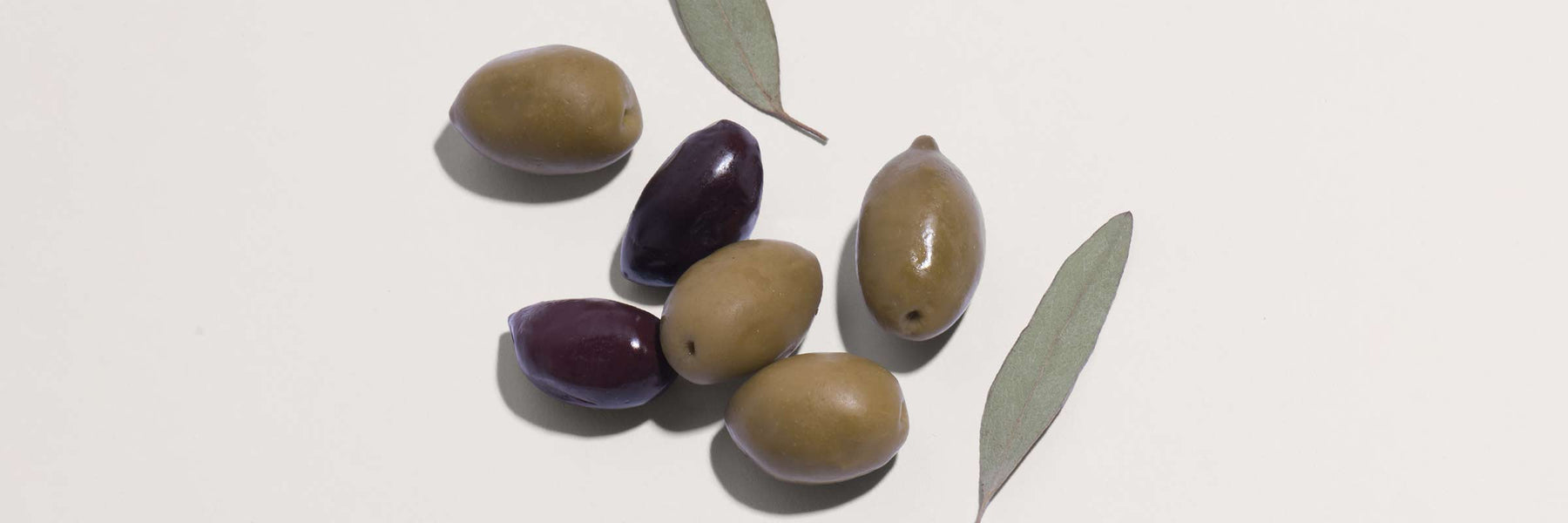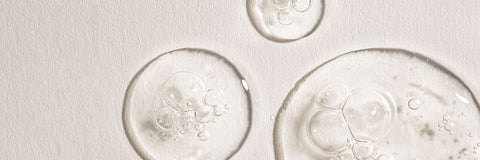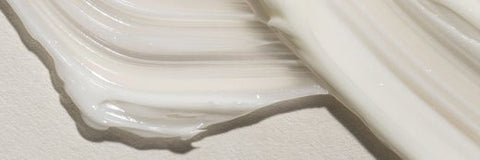Despite the fact that we spend a lifetime in our own skin, it contains plenty of components that most of us have never heard of.
Take squalene, for example. The term may be new to you, but it’s actually a natural oil that exists in your epidermis. When made for skin care, it becomes squalane, and you may have seen it on store shelves or in some of your favorite products.
Squalane on its own has an array of uses and it’s getting more and more attention for its various good-for-you qualities. Like many other natural skin care ingredients, it boasts all kinds of benefits.
Stay tuned for 10 reasons to use squalane, what squalane is and where it originates, how to effectively use squalane, what types of skin it works for, and answers to all of your other key questions. Watch our informative video below, or keep reading!
IN A NUTSHELL
Ingredient Category: Oil/emollient.
Main Benefits: Because it mimics your skin’s own natural oils, squalane is a highly effective moisturizer for all skin types. It also has anti-aging properties.
Find It In: Nectar of the C Vitamin C Serum, Just Dew It Hydrating Serum, ‘A’ Game Retinol Serum, H2 Oh Yeah Hydrating Moisturizer, Crème de la Cream Brightening Moisturizer, Youth Fairy Retinol Moisturizer, Eyes Eyes Baby Anti-Aging Eye Cream, and Prince Charcoal Detox Mask.
What Is Squalane? Where Is It From?
Squalane is a modified version of squalene, a natural substance produced by the sebaceous glands that makes up 10 to 12% of your skin’s oil. It’s a natural antioxidant and helps keep your skin supple, youthful looking, and hydrated. But as we age, squalene production tends to decline.
When you buy squalane, it’s actually squalene that’s been through a hydrogenation process. That makes it shelf-stable and ready for you to buy!
For commercial use, squalane was originally sourced almost exclusively from the livers of sharks (ick), but now much of it comes from plants like olive oil, rice bran and sugarcane. Before buying any squalane oil, you can check with the manufacturer to see where they source theirs from.
10 Squalane Oil Benefits
1. It reduces the appearance of fine lines.
Squalane functions as an antioxidant, helping to minimize the look of fine lines or wrinkles.
2. It moisturizes skin.
Squalane serves as a lightweight moisturizer and leaves skin hydrated, supple, and luminous. Because it’s so similar to your skin’s own oil, it tends to provide just the right amount of moisture without over(or under)doing it.
3. It softens texture.
Because of its hydrating and antioxidant properties, squalane oil can actually help improve the look of your skin’s texture, leaving your skin baby smooth.
4. It soothes skin and prevents irritation.
Squalane benefits include a soothing quality that can help prevent and alleviate irritation. It is a source of fatty acids that replenish and nourish the skin, soothing irritation.
5. It’s non-comedogenic.
Comedogenic refers to whether or not an ingredient is likely to clog your pores. Squalane is considered non-comedogenic, making it a great choice for all skin types.
6. It controls oil.
Because squalane mimics our skin’s natural sebum, or oil, it can actually help to control natural oils. The skin recognizes squalane as a naturally occurring oil and therefore produces less on its own, making it a great choice for anyone with oily skin.
7. It can help fade the look of dark spots.
With powerful antioxidant qualities, squalane benefits include improving the appearance of your skin tone — which can include fading the look of dark spots. It can brighten your overall look, helping to even out your complexion.
8. It helps strengthen the skin’s barrier.
Because of its antioxidant properties, squalane protects your skin by strengthening its natural barrier. This barrier blocks environmental stressors and pollutants that can harm and age your skin.
9. It’s light and breathable.
Because squalane is naturally occuring in the body, it’s a great lightweight addition to your skin care routine. It’s never greasy and offers moisture without the added heaviness that some oils and products create.
10. It can help reduce temporary redness.
Squalane has a gentle effect on the skin and can actually lessen the appearance of temporary redness. Expect it to help alleviate discomfort and promote an even, revitalized skin tone.

How to Use Squalane in Your Skin Care Routine
Squalane is best used on your face as part of a daily routine. Remember to buy 100% pure squalane and avoid unnecessary additives or chemicals.
Here’s the best process for applying it:
- Cleanse your skin with a natural face wash.
- Apply a toner.
- Apply any other serums or treatments.
- Put a few drops of squalane oil on your fingertips and apply to your face and neck.
- Apply sunscreen (in the a.m.).
You can also find squalane in some of your favorite skin care. We included it in several of our products, including Fleur & Bee’s eye cream, all our serums and all our moisturizers, due to all its awesome anti-aging and moisturizing benefits.
Some people also use squalane oil to boost their hair’s moisture and shine. You can massage a few drops through your locks before showering to reap the benefits.
What Skin Type Is it Good for?
There are four different standard skin types. Here’s a breakdown of how squalane works for each.
Sensitive: Because squalane has a gentle effect on the skin — and it mimics our natural oils — it’s a great choice for people with sensitive skin. It can actually help to alleviate discomfort, reduce the appearance of temporary redness, and provide a calming sensation.
Oily: One of the many benefits of squalane is the fact that it can help balance oils. If your skin is oily, squalane provides the perfect amount your skin needs, keeping your oil glands from overproducing.
Dry: Much like squalane balances oils for oily skin, it can do the same for dry skin. While it’s lightweight, it can also help your skin retain moisture and stay hydrated and supple.
Combination: Squalane oil is also excellent for combination skin because it balances whatever your skin needs — more or less oil — at any given time. It can help keep your skin in perfect homeostasis.
While squalane is an excellent choice for all skin types, we recommend patch testing it first to see how it reacts with your unique skin.

Other Frequently Asked Questions About Squalane
What does squalane do for your face?
The benefits of squalane for your face are many and include hydrating your skin, promoting a youthful appearance, alleviating the appearance of temporary redness, controlling oil, reducing the appearance of fine lines and more. Because it mimics our skin’s natural oil, it has an array of benefits long-term.
What is squalane best for?
Squalane is best used on your face (and neck) as a tool to help renew the look of beautiful skin and promote a youthful appearance.
Is squalane vegan?
Whether squalane is vegan depends on where it’s derived from. Squalane can come from different sources including both shark’s livers and a variety of plants. When you buy squalane be sure to check for a “vegan” label or confirmation about the origin of the ingredients. Here at Fleur & Bee, we source our squalane from olive oil.
Is squalane safe?
Squalane is a derivative of squalene, a naturally occurring oil. It’s widely considered safe and natural for use in skin and haircare. But as with anything, individual results and allergies vary depending on the individual.
Is squalane safe when pregnant?
Yes, squalane is a stable, saturated oil and considered safe while pregnant. But be sure to check labels to make sure there aren’t other added ingredients that may not be safe.
Squalane vs squalene?
Squalene with an “e” is a natural oil made by your skin. Squalane with an “a” is what it becomes after hydrogenation, or processing. Squalane is the shelf stable and longer-lasting version you see in products and stores.
Squalane vs jojoba oil?
Both squalane and jojoba oil are similar to the natural oils made by our skin and provide many of the same benefits like hydration, oil control and more. Squalene is actually a natural antioxidant made by our skin. It’s also found in plants (and shark’s liver) and can be processed to become squalane.
Jojoba oil occurs naturally in one particular shrub and contains Vitamin E, Vitamins A and D, the minerals chromium, copper, and zinc, plus Omega 6 and 9 fatty acids.
Both squalane and jojoba oil are appropriate for all skin types. Choosing one or the other is really a personal choice depending on what sounds more appropriate for your unique skin.
Summing Up Squalane for Your Skin
To sum up, squalane mimics our skin’s natural oils; it can help promote youthful, supple, radiant skin; and it’s a great choice for all skin types.
Basically, it’s a natural wonder. We highly recommend incorporating squalane into your skincare routine!













